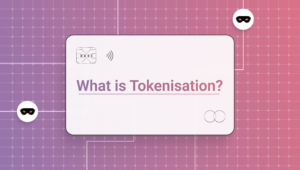Return to origin – E-commerce and return orders

The success of an e-commerce business cannot be measured alone by the number of orders you receive on your website. Other factors such as thorough product quality check, ensuring proper product packaging and verifying the shipping address also come into account while considering the success of your business.
You need to target customer convenience because customers cannot inspect the product thoroughly for defects or appearance when shopping online.
It is one of the reasons why 66% of the products ordered via online shopping gets returned in the UK.
So before calculating the ROI of your e-commerce business, you need to take Return-to-origin (RTO) into account. Here we discuss things you need to know about RTO and its importance for your business.
Table of Contents
What is RTO?
Return to origin refers to the non-deliverability of packages or when an order is returned by the customer and shipped back to the seller’s warehouse.
Returning the products to the warehouse and other processes involved in between can increase your expenditure.
Logistics and transportation play a crucial role in the e-commerce industry. It aims to ensure the safe and timely delivery of orders to the customer’s address from the warehouse.
And, to execute this process with no to less friction, you need to allocate orders intelligently, optimise delivery routes efficiently, plan trips properly, provide end-to-end visibility to customers, and have a full proof reverse logistics strategy.
The role of reverse logistics
Typically, eCommerce merchants use reverse logistics to return a product to the vendor after a customer has returned it. On the other hand, manufacturers view it as receiving defective products back from users.
In other words, reverse logistics is the process that involves sending goods from customers address to your warehouse when customers raise an issue with the received product.
Reverse logistics plays a significant role in reducing your operational cost once there’s a well-established flow to create efficiencies in production, logistics, and distribution costs, which reduces RTO.
Why is RTO important?
RTO is essential for e-commerce businesses to:
Calculate accurate ROI
You can find the ROI of your orders easily in your CRM tool or any other software you use. However, it isn’t the accurate ROI as it only provides the data of ordered products.
But, what about the data of the undelivered and cancelled orders? It sure costs you a hefty amount for operations involved in returning the product to your warehouse, which also influences your business ROI.
Wrong ROI = Wrong CAC and CLTV.
It sounds like a massive hassle for your business.
Estimate the shipping charges
When finalising the shipping charges, consider the return shipping charges you might have to incur if the customer returns the order.
This return process involves shipping from your warehouse to the customer address to shipping back to your warehouse.
Analyse your products
You can calculate RTO and segment it according to the products. It helps you differentiate between the products selling well and the products that customers are returning the most.
You can also identify the issues in the product that customers return often.
What are the typical scenarios of Non-deliverability of products?
- The customer isn’t available at the time of the delivery
- The customer denies receiving the package
- The address or contact number provided by the customer is incorrect
- Failure in re-attempt of delivery
How is the RTO process implemented if any of the above scenarios occur?
The package isn’t sent back in most of the cases. Once the delivery services mark the non-deliverability status:
- Most courier services re-attempt order delivery two or three times
- The delivery executive calls the customers to ask the appropriate time to deliver the product
- The courier services send text or IVR calls to check the availability to receive products or if they want to return the product
- A non-genuine buyer who placed an impulse order
- Customers have a change of heart after placing the order and refuse to take the order
- When a customer isn’t reachable or declines the delivery, then RTO is triggered
- The customer sends the order back to the seller
This entire process depends on the contract between the shipper and the courier company.
How to reduce the RTO of your business?
Remember, the lower the RTO, the higher is the ROI of your business.
To keep your RTO minimal, here are some key metrics that you can use for your e-commerce business.
Improve product quality
One of the reasons to return the order is that customers are unsatisfied with the quality of the product they receive.
You should focus on the quality of the product. Start by making a list of 10 products that have received quality complaints and wander through customer reviews to find out the issue.
You can start a product review campaign and reach out to the customers asking what they didn’t like about the product. Note the points down and achieve a better version of the existing product.
Detailed product description
Customers also return the order if the description and images of the products don’t match with the actual product.
Ensure your website has a detailed and genuine product description providing customers with enough information about how the product works.
Accept online payments instead of cash
Studies show that the average e-commerce returns rate increases for cash on delivery (COD) orders. A high return rate includes customers not having the exact cash when the product gets delivered.
Integrating online payment methods by leveraging a payment gateway or a virtual terminal can benefit your business.
You can send payment links to your customers when accepting a COD order. It helps you accept online payments by redirecting your customers to the payment gateway where they can pay for orders using E-wallets, credit and debit cards.
Check customer availability
You can integrate a form on your website asking customers to choose the time slot available to receive the order.
Then, you can deliver the order close to the time slot selected by your customers.
Make a verification call
After the customer places an order, you can make a verification call to them asking if they are interested in buying the product or have second thoughts about it and maybe want to cancel the order.
If the customer cancels the order, it saves you the shipping cost and labour time involved in packing and shipping the product, reducing the RTO.
Offer Discounts and Gifts
It is considered an effective way to reduce the RTO. Every human loves receiving gifts and discounts.
Offer your customers a discount if they try to cancel an order. It might change their mind at the last moment and lead them to buy the product.
Ensure the free gift you provide within the package is helpful for the customer and makes them feel like your businesses priority.
Incorporate transparency
You can provide user-friendly tracking software to your customers to track the order that they have placed. Walk them through the end-to-end shipment journey till the customer receives the product.
Also, keep your customers updated in case the product shipment gets delayed and provide a relevant reason alongside.
Upload product video on your website
Give customers the 360° view of your product, how it works, and what it looks like via a product video.
So, before placing the order, customers have an image of the product, and then they decide whether to buy the product or not.
Key Takeaways
- RTO stands to return-to-origin
- RTO refers to the non-deliverability of packages or when a customer returns the product to the seller
- RTO plays a significant role in accurately calculating your ROI
- The lower the RTO, the higher is the ROI
- Reverse logistics is moving goods from their typical final destination to capture value or proper disposal
- Upgrade your reverse logistics strategy to perform the return process of the product smoothly
- To reduce RTO, you need to focus on product quality and description, provide several payment methods, use verification calls, offer discounts or coupons, build transparency between you and your customers, and use video product descriptions.
You can also provide end users with multiple payment options on delivery in order to further reduce the friction to pay for the order and eventually reduce returns. Payment links could be shared using the virtual terminal as an alternate payment option or through the OmniPay mobile app.



